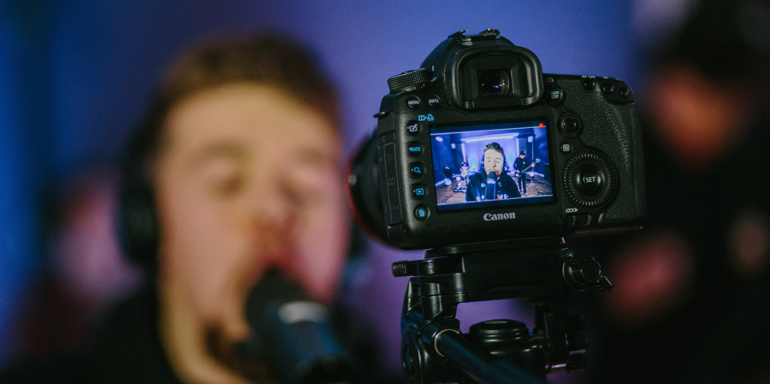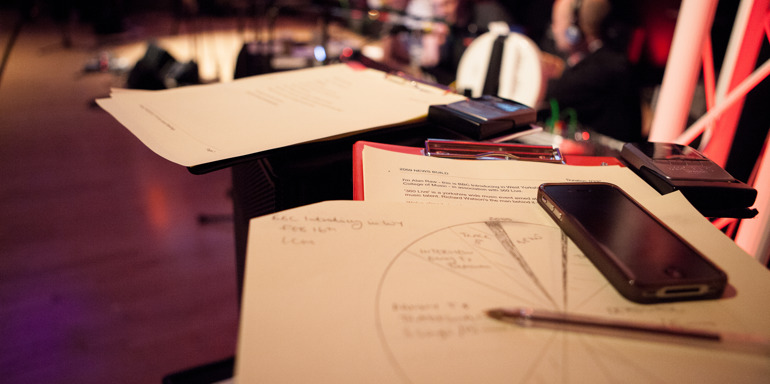Knowledge of social media is essential to any role in the music industry and is particularly crucial if you manage projects like a band, a club night or a record label. Social media can help you build a fan base and connect with people in the industry. It’s interesting to notice that social media management as a career pathway is in expansion, as more and more artists and labels realise how much skill and time is required to develop a meaningful internet presence.
A number of elements come into play when running a social media campaign of any kind. These can be grouped under five loose headings: Strategy, Content, Tools, People and Analytics.

Strategy
Define marketing objectives: what are you trying to achieve?
- Marketing objectives can be: brand awareness, traffic to a website, community building etc. Once goals are set, outline how these will be achieved and in what timeframe.
- Conduct an audit of the social media channels you’re working on in their current state: see what gets likes, spot anything that needs to be deleted or edited. Make sure all accounts are on-brand with the right links, imagery, and bios.
- Spend some time thinking about who your target audience is and their interests. It will be useful when setting up Facebook ads.
- Which platforms does your audience use? Don’t spend too much time on a platform that doesn’t work for you or your audience demographic.
- How often/what time of day will you post? As a rule of thumb, it’s generally best to post in the middle of the week/in the afternoon 3:00pm – 8:00pm. Think about when YOU use each platform.
- Decide on a tone of voice / positioning and stick to it. Will you speak in the first or third person? Will your tone be casual? Humourous? Formal?
- Start planning: create a content calendar. You can use Microsoft Excel/Word, Google Sheets. Have a look at templates online and fine-tune your process as you go. It’s important to strike a balance between structure and flexibility, so don’t feel like you have to stick to the plan at all times.
- Regularly go back to your objectives: are your posts working towards your main objectives?
- Be consistent in terms of brand identity and frequency. You want your brand presence to be reasonably reliable. Post once a day if possible, but if not try not to leave too long a gap between posts.

Content
Good content makes good social media.
- Content creation includes copywriting, taking photos, making banners and branded imagery, creating GIFs, videos…
- Quality content is a key component of good social media – be innovative, showcase your personality.
- Proofread! Obvious but paramount.
- Include images in posts where possible. A user is 44% more likely to engage with a post if it contains an image. Another option would be to use a link preview.
- Be reactive to what’s going on in the world/the industry. Take part in existing conversations, react to news stories, trends, hastags… if it makes sense for your brand to do so. Mindless “newsjacking” should be avoided.
- Be a storyteller and not a salesperson. Your calls to action should be subtle not desperate, as your social media presence should bring value to your audience. Posts that are not direct sales messages get more engagement.

Tools
Harness your creativity using the tools at your disposal.
There are plenty of features, apps and websites you can use to get the most out of social media.
- Experiment with the various features that social media sites offer, try cross posting videos on Facebook, live feeds, Instagram stories, hashtags etc.
- Creating ads in Facebook, Twitter or Instagram can be meaningful but social media advertising can be hit and miss so do a lot of research before spending your money.
- Try scheduling apps like Tweetdeck, Hootsuite, If This Then That and Buffer.
- There are tons of free desktop and mobile apps that can help you create great visual content like Boomerang, VSCOcam, Snapseed, Photogrid, Canva, Pixlr, gifmaker.me.
- Stay in the loop about new features and learn skills using online resources. Social media companies like Hootsuite, Simply Measured and Buffer share invaluable information via blogs and newsletters. Social media online courses are widely available – have a look at Wearedotdotdot and Buffer’s Social Media Academy.

People
The reason we’re here!
- Find your existing, real life contacts and engage with them.
- Interact with your community: tag, follow, like, comment, regram, retweet.
- Look up hashtags to discover new accounts and use hashtags in your Instagram posts to allow people with related interests to discover your posts.

Analytics
Social media analytics is the practice of evaluating data to make marketing decisions.
- Scan Facebook Insights, Twitter Analytics, Instagram Insights.
- Test what works best and do more of that.
- Recognise good use of social media and learn from it: take inspiration from social media accounts you like.
- When running social media campaigns for clients, analytics are used in reports and inform strategic decisions.

Some things to remember:
- Social media marketing as a promotion tool operates through “social contagion”. It takes time and real people engaging.
- Social media exists within a complex web and an abundantly crowded media message space, making it difficult to cut through the noise and connect with an audience. Be patient and keep working at it.
- Social media activity works best in conjunction with other things happening in the real world at the same time. Social media should complement real life social interactions, not replace them.
Some useful definitions:
- Impressions = the number of times a post is served, i.e. displayed
- Reach = the number of people who received impressions of a page post
- Engagements = likes, link clicks, comments, shares…
- Engagement rate = number of engagements divided by impressions







